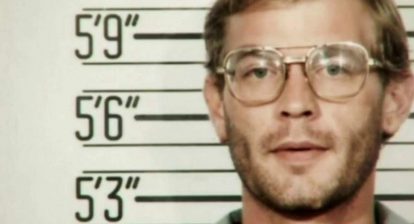Nick Nocturne is the charming host of the YouTube channel Night Mind, a must see for those who consume horror related content on the regular. With longform videos and engaging livestreams on his channel, Nick dives into various ARGs (alternate reality games) including Marble Hornets, EverymanHYBRID, TribeTwelve in part 1 of this series (see here) as well as work from Wham City Comedy (This House Has People in It), Alan Resnick (Alantutorial, Unedited Footage of a Bear), Daisy Brown, and many, many more.
If you missed part one of this series, check it out right here!
On Night Mind, Nick Nocturne dives into these ARGs and presents the viewers with a concise timeline, pulling together all the different media sites the creator utilized to help guide the viewer through this constructed world. Effectually, Nick makes ARGs accessible to viewers (myself included) by helping us navigate the format and allowing us to grow past his channel and become invested on our own. Many of the investigations include pauses where Nick tells the viewers to watch the video before he discusses only the highlights and that the viewers are doing themselves a disservice by not watching the original content.
Further, Nick also engages his viewers by live streams that have topped at 8 hours concerning investigations, he allows submissions during his Halloween events, and recently, united his viewers in the challenge to read House of Leaves in 9 days before he released related content. House of Leaves is a fictional book that functions like an ARG in your hand, telling three stories that are presented simultaneously across separate timelines. I highly recommend having a look if you have not treated yourself to it.
Nick kindly agreed to answer some of my questions about his channel, ARGs, and much more. So please enjoy and don’t forget to check out his channel right here.
Also see: Clive Barker’s Next Testament, Holy S*** [Graphic Novel Review]
WickedHorror (WH): As I said before in my multi-part series I am discussing ARGs, those who investigate them, and those who make them. So, you have noted before that the Slenderman based series Marble Hornets inspired you to create ARG investigation videos. But, how did you come across Marble Hornets and ARGs? What made you interested in ARGs?
Nick Nocturne: My interest in ARGs and internet-based storytelling projects actually began in 2007 with the Cloverfield ARG. When the trailer for that film came out, it was groundbreaking–pure found-footage, no title, just a release date and an overwhelming air of mystery. I dug in online after getting home from the theater and managed to catch the early trailheads related to the untitled project, which was eventually revealed as “Cloverfield” and connected to several odd websites. I was instantly hooked and became invested in the community for the ARG, as well as the wider realm of this form of storytelling.
A few years later, as the Let’s Player scene on YouTube was really getting big, it brought popularity to Slenderman via the game, “Slender” (which later was titled “Slender: The Eight Pages”). There was already a bubbling viral scene for Slenderman as a concept, but when Markiplier and Pewdiepie recorded playthroughs of the game, it hit a fever pitch. Those games made me want to find out all about Slenderman and the research immediately uncovered the inspiration for the “Slender” game: Marble Hornets.
I have such a strong memory of sitting on the floor of my bedroom on a summer afternoon in 2012 with my laptop open to the Marble Hornets channel, watching upload after upload. The sun started to set shortly before I caught up to the most recent uploads at the time and I remember finishing the journey thinking about how I’d never, ever found something like it and just wanted more. This kind of creativity and determination was incredible to me.
WH: Investigating ARGs and their various components is a rabbit hole that requires a great deal of your time. This can be seen in your videos which range between 1 and 8 chunks, but to you what makes these investigations worth it?
Nick Nocturne: Quality, effort, and impact. There have been plenty of webseries, ARGs, internet projects and other online oddities since Marble Hornets showed the world you could do this independently, but there are only some that really leave a lasting impression or feel like important contributions to a very young field of art. It was the effect that Marble Hornets and its later peers had on me that made me realize this is a field that can’t just be a blip on the internet’s “early 2010s” period–this is art, this is invention, this is innovation, and it has an incredible effect on people while having no Hollywood backing or money behind it. If someone pours their heart and soul into a project and it’s truly outstanding in a number of factors, that deserves recognition and remembrance. We’ve all been taught that titans of art fields today all too often were ignored or even downplayed in their own times while they were alive, and it’s a shame. I wanted to establish a movement for acknowledging, celebrating, and recording what’s incredible now, whether it’s made over a million views or only one hundred.
WH: After all your investigations with various ARGs, in your opinion, what makes a compelling series?
Nick Nocturne: Originality and a genuine effort put into engaging storytelling is what makes a series great. Marble Hornets had such popularity and effect that it inspired two peers, EverymanHYBRID and TribeTwelve, both of which are Slenderman-based webseries. But these series produced such originality in execution, concept, performance, and style for their versions of the monster that they stand as their own creations and can’t ever be called “copycats” to Marble Hornets.
Audiences always want something new, even if it’s with an old concept, and they absolutely need a foothold of human empathy and ability to relate to get onboard with a story, whether in a webseries or alternate reality game. The stories that have all succeeded greatly in this field have one thing in common: no matter how weird it’s going to get, it opens with a person we can relate to on some level and come to follow in their journey… or something that does a great job appearing to be a person, anyhow.
WH: On the other hand, what makes a series flop?
Nick Nocturne: Opening in such an obtuse, unrealistic, alienating way that no one wants to engage with you is the fastest way to fall on your face. We all love horror, we all love monsters, we all love the scary and weird stuff–but it’s only ever effective when we’ve been primed into a state of comfort, belief, and engagement with the atmosphere that’s about to be disrupted by some freak in monk robes sending us Snapchats of bloody trash bags,. There are no effective horror movies that open cold with some drooling madman or hideous monster–everything powerful, including webseries and ARGs, begin with human beings or something in the human realm. We need footholds, doorways to enter realities, so we can sit down and get scared. Trying to kickstart your webseries by uploading a video titled “R3mn@ntZ–11010110” and showing a man in a mask staring at a wall with a puzzle in the video description is the least engaging thing you can do, because you didn’t put in any work to make a human being care about the reality you’re putting forward. Why should I care about your freak off his leash spamming pictures of a tomb in the woods on Twitter? There aren’t any genuine characters involved you made me care about who are facing this enemy, so I’m not going to tune in!
The other fastest way to fall on your face and make a flop is, quite simply, to copy what someone else has done or run around making yet another Slenderman series after the eight or so that have already been made years ago. Imitators never get far in this field. Always utilize inspiration, never practice imitation. Don’t try what you think has been profitable–the people who made stuff that succeeded were terrified that their crazy, untested original approach wouldn’t work when they first began. Embrace your fear of the road-not-traveled and do something new.
WH: Can you tell me about what impact you think House of Leaves has had on ARGs? [House of Leaves of course being credited as the grandparent of ARGs, just in written form.]
Nick Nocturne: House of Leaves can be credited as inspiration for any creator who came to realize while reading it that you don’t have to play by industry rules. You can play with form, you can introduce different types of media or storytelling, you can mess with narrative, you can think about ways in which a character we’re supposed to trust is messing with us–you aren’t held by the laws your high school English teacher laid down. Artists create entire movements just by daring to break the rules of established industry or the traditional practices of crafts, and it’s often because, in doing so, they show us the height of genius: making a truly effective move that’s new and generates feelings we’ve never experienced.
WH: You also made a special point to challenge your subscribers to complete the House of Leaves book in 9 days. At first, the 9 days seemed like a fun way to unite your subscribers in a shared endeavor. However, after reading House of Leaves myself, I think this timeline was purposeful in order to rush the readers into a complicated work without the ability to really consider the content. Was this the case or was it just indeed a fun challenge?
Nick Nocturne: There were three aspects to the Nine Days Challenge for House of Leaves and you’ve hit on one of them: uniting subscribers in a shared endeavor. The second reason was to generate an effect that many, many readers over the years can relate to when it comes to House of Leaves, which is also present in the novel through the character of Johnny Truant–becoming entranced by a work and rifling through pages like a madman, getting lost on purpose in a mystery box, digging deeper and deeper for the heart of the tale and the end of the maze. Empathy with Johnny Truant and an understanding of being addicted and lost at the same time was an experience I wanted as many readers as possible to have, because those are core elements of the novel and effects of its design. When you enter the House on Ash Tree Lane, it enters you, and it’s going to keep driving you back to the book as much as possible in the same way Johnny Truant found himself unable to pay attention to anything outside Zampano’s manuscript.
The third reason is one that only becomes clear once you get, say, 90% through the novel and concerns the number nine. It’s one of many little sneaky echoes I hid in the overall design of the review series.
WH: In your investigation videos you repeatedly express that the viewer must view the original content for themselves in a way that shames them for not doing so (justifiably). Why do you find this important to stress to viewers?
Nick Nocturne: Because the ultimate act of evil and hypocrisy in a job like mine would be to cannibalize others’ content for my own gain while the original creator enjoys none of the benefits, and summarizing a work by using half of its material in one week of effort after someone spent months to years working on it completely disrespects the creation while robbing it, and the viewer, of so much of its artistic power.
It’s no secret that it’s easier to watch a one-hour video spoon-feeding the story of a 4-hour series with all its social media bits put into a neat timeline than to actually go through the whole thing yourself, but how does that help the original artist, and how does that give a viewer the same experience they would’ve had undergoing the original journey on their own? How does that help the field of art at all? If you’ve spent three years working on your project, putting in all that work, and I come along and make an hour-long video on it with ads enabled and make more views on my video in three days than you made on any single upload in those three years, there’s a horrible imbalance and a grave disrespect present if I do absolutely nothing to support your work. The project you made, the work you put in, is the very thing that enables my existence, and you deserve every ounce of support, viewership, admiration, and monetized views on your original content as I can possibly send you.
Night Mind is absolutely nothing without the creativity and effort of those who made the projects that I cover; my content, largely, is derivative and exists solely because of another artist’s work. I’m a broadcaster for art, not a replacement, and you should never value a radio station or DJ over the musicians whose work they play.
WH: In my opinion your investigation series of ARGs make ARGs accessible to those who would otherwise be left in the dark. I know for me, I was unable to navigate this content without your guidance and you have opened my world. Is that one of your motivations to create your investigation videos?
Nick Nocturne: The first motivations were always as follows: celebration of the work, making a record of the work, and making the work accessible to as many people as possible (which is also an act of celebrating the work). You’re absolutely right that this was one of the intentions for investigation videos. If someone did something truly amazing that everyone should enjoy or know about, but it’s hard to piece together, I want to be the middleman who makes it easy. Someone has to build that bridge and I’ve always been willing to do that.
WH: What is something you wished everyone knew about ARGs?
Nick Nocturne: I’ll declare it right here and how: just because it’s weird and immersive, that doesn’t make it an ARG!
ARG stands for “alternate reality game.” Break that down and you’ve got two conditions to meet: ‘alternate reality’ and ‘game.’ In the condition of alternate reality, there needs to be an overall sense that this story is a reality extremely close to our own or accessible through our means–it’s a secret reality, a reality that’s leaking into the Real World, a mirror reality of ours, an undercurrent of the Real World, or, quite simply, a story in the Real World that we all know is fake but we’re playing into it and pretending it’s real as hard as we can, like one big internet LARP. When someone sets up a project or series in such a way that we’re closely monitoring or even interacting with inhabitants and events of that reality and we’re all supposed to pretend and play along with how serious and “real” it is, the alternate reality condition has been met–but that still doesn’t make it an ARG.
For the full label of ARG, you need the ‘game’ element, too. Now, this is not a game in the traditional sense, but a game in the sense that there is a degree of direct involvement and action by viewers to meet new conditions for information to be unlocked or consequences to befall a character or the community. If you want to be an ARG, your audience can’t all just sit there and watch new content you upload, even if it’s on multiple websites or outlets–they need to actively do some kind of work or be directly involved in a storyline’s movements. Often, that direct involvement and action by viewers constitutes puzzle-solving or playing detective through deductive reasoning and inference on their own to solve the case of what’s going on with the story. There are prime cable and Netflix shows, movies, and video games that all spur theorizing and putting together clues or evidence in the media to anticipate what’s going to happen in future episodes. You find that in an ARG, but instead of being the natural process of sitting down in a movie theater and guessing who the slasher is, the act of constant guessing and anticipating is a core part of the experience.
Webseries quite often have that element really turned up high, but if the series or project doesn’t have direct involvement aspects by the community of viewers and their actions don’t spur movements, progress, or changes in the story, it’s not a game. You need both elements to be an ARG, and to wrap it up, I’ll go ahead and circle us back to the perfect example of how it’s done: Cloverfield.
WH: What do you think the future of ARGs will be?
Nick Nocturne: ARGs and immersive online storytelling projects are only going to keep evolving and showing new faces and ways of playing out a story, because its very bed is internet technology. As long as new websites, social media services, apps, and tech inventions keep rolling out, we’re going to have more stories that can be told and awesome new ways to do it. Wherever you give a human being an opportunity to be creative or expressive, they will eventually do so, and it always inevitably leads to a storyteller trying it out, for a short exercise or a long one.
I think, however, that the future of ARG and this whole realm of reality fiction, interactive online fiction, etc, points towards two results. Stories that can ultimately produce profit will succeed by their own efforts, be it revenue from the outlets they utilize, Patreon support, or a mix of both, which is something we already see through YouTube-based projects. As the field continues to impress and show the depth of new ideas and their viral appeal, we’ll also see mainstream platforms approach creators of online storytelling hits for adaptations of their work or the possibility of working with them on new ventures, because they’ve proven their ability, gained a following, and have a name and reputation that now resonates.
We already know the movie and television industries are paying attention and it goes beyond the film adaptation attempts of Slenderman; Adam Ellis, the writer behind the Twitter story, “Dear David,” was approached for a movie deal based on that experiment alone, because it had mass appeal and a concept that could be adapted. You can walk into stores in autumn, now, and find masks that are very obviously inspired by creepypasta hits and viral internet horrors.
Ultimately, ARGs and the associated fields are the internet’s open canvas for creators with cool ideas and little-to-no budget to show the world just how talented, creative, and dedicated they are. It’s not just an art form–it’s a global talent show where everyone can show what they’ve got on an equal playing field, and if you give it your all, the sky’s the limit.
____________________________________________________________________
Follow us on social media! Twitter, Facebook, Instagram, and Youtube.







